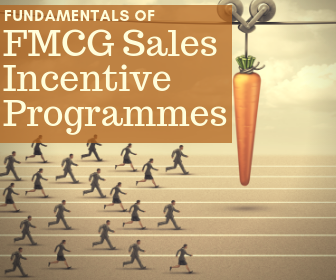When I say Sales Incentive Program (SIP) in the Fast-Moving Consumer Goods (FMCG) sector, I am referring to the internal company incentive program that is used to motivate and influence the behaviour of sales people and teams to deliver company specific results. This is not to be confused with a Trade Incentive Program, designed to motivate Retailers or Distributors or other Trade Partners.
SIPs in the FMCG sector are crucial in the delivery of Route to Market (RtM) goals. The old adage is true, what gets rewarded gets done. But is it that simple? Well, no. Putting a SIP together can be a minefield unless all the bases are covered. Let’s dig a little deeper.
 Welcome to my blog series on the 20 Steps to Route to Market Excellence model. I am writing this blog to offer guidance on the things that should be considered when putting a RtM strategy together. Over the past number of weeks, we have gone through the first 10 steps of my model. The focus of this post is Step 11, ‘Sales Incentive Programme’.
Welcome to my blog series on the 20 Steps to Route to Market Excellence model. I am writing this blog to offer guidance on the things that should be considered when putting a RtM strategy together. Over the past number of weeks, we have gone through the first 10 steps of my model. The focus of this post is Step 11, ‘Sales Incentive Programme’.
Here are some examples of questions you can ask under Step 11 - Sales Incentive Programme (SIP):
- Based on the RtM Review in Step 1, is there a SIP in place? If yes, what is the current SIP? How is it performing? What were the key factors that led to any past successes?
- What does the current SIP measure? How is the performance of the sales people measured and what are their targets?
- To what extent are we targeting volume, revenue, profit, share, brand distribution, display, range, TM&D activities, point of sale material, promotions, new accounts, new brand introductions, out of stocks, cash in, etc.? What are the top 3 or 4 metrics that we currently measure? How would this be used in developing any new SIP?
- How do we currently assign targets between the different Regions, Areas, Channels, Territories, Key Accounts, etc.? How will this be done in the future?
- Is the current program complex and difficult to understand or administer? Or is it simple, easy to follow and understood by all?
- How attainable are the rewards in the current SIP and how will this inform any new programme?
- Is the current programme based on short terms incentives, e.g. monthly or quarterly, or is it based on longer term, annually or 3 yearly? How will this influence any revised programme?
- How achievable is the current SIP? To what extent are targets achievable? Does it favour a small group within the sale force? How will this knowledge be used to develop any new programme?
- Based on the new, revised or reviewed RtM approach, what measures will we use in future for our sales/RtM department?
- How will we report the new SIP? What method of reporting will we use and what will the frequency be?
- Will we operate a leader board system where every sales person knows where they rank? Will sales people have real time visibility of their and others performance?
- What are the primary motivating factors within our organisation, country, culture, etc? Are they financial, recognition, skill acquisition, team based, career progression, etc.? Are they a mix of them all?
- If we choose a financial route, will it be a percentage of the sale, their salary, the monthly revenue, a fixed amount? Have we considered using a physical item equal to the value of the financial reward as the incentive? Would a personal item that the sales person keeps in their home be more rewarding than cash?
- Will any targets and rewards be individual, or team based and how does this reflect how the sales people actually work in the real world?
- What will be the elapsed time between achievement of an incentive and the attainment of the reward? Could we lose motivated sales people through extended time lapses?
- Have we ever asked our sales people for feedback on the current SIP? Have they ever been asked how they would change or structure a programme? Do we know what motivates them? Have we directly asked them what they want as an incentive?
- Will managers have the ability to adjust sales targets or quotas based on specific factors? Will there be a need for a process for this? If so, what will the process look like?
- How will any new or revised programme be ‘sold’ into the organisation? How will we achieve, and measure buy-in?
- Has any new SIP been tested and modelled before rolling out?
- Based on the above, what will the new SIP look like?
I hope you find this useful, any views and comments are welcome. Next week I will cover Step 12 ‘Trade Tool Kit’. Please subscribe to the blog on this page, to ensure you don’t miss the latest updates on RtM excellence in execution and the 20 Steps model. If you would like to know more about the 20 Steps click here.







